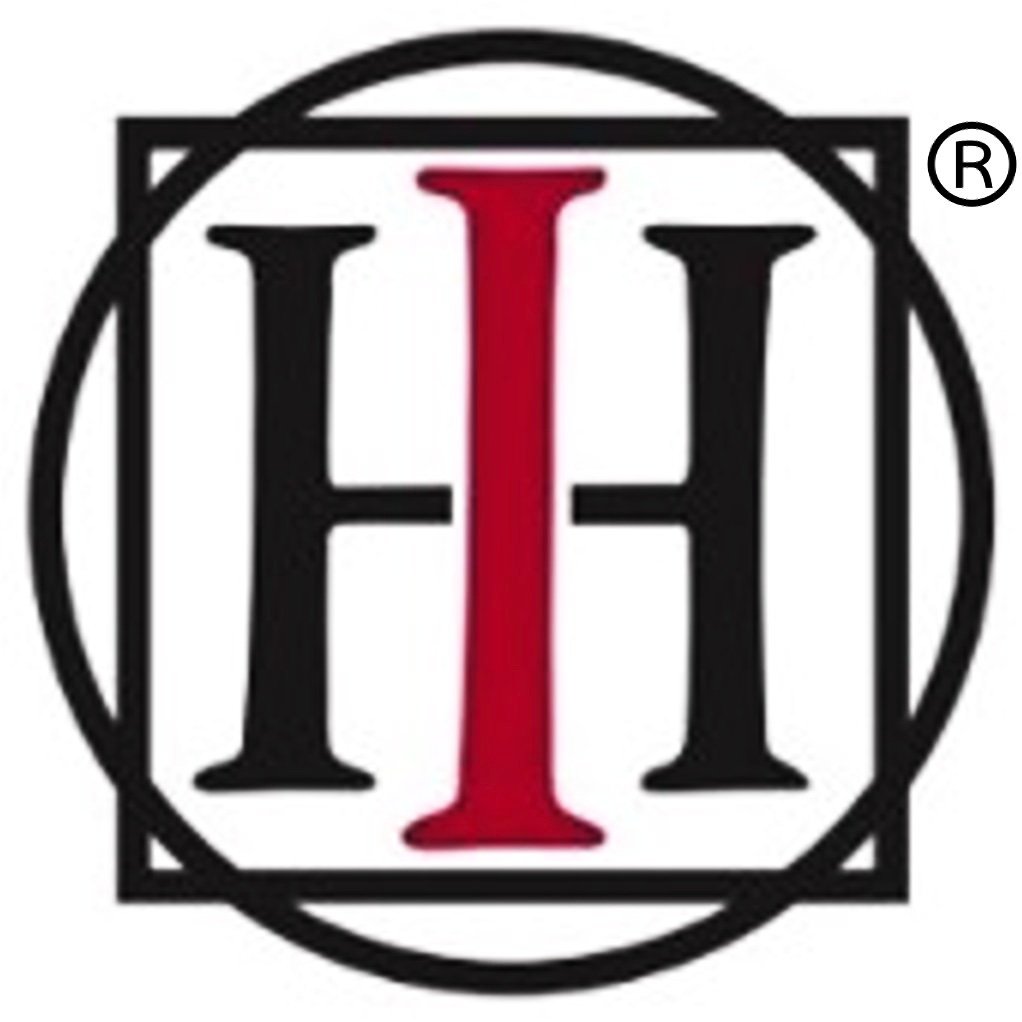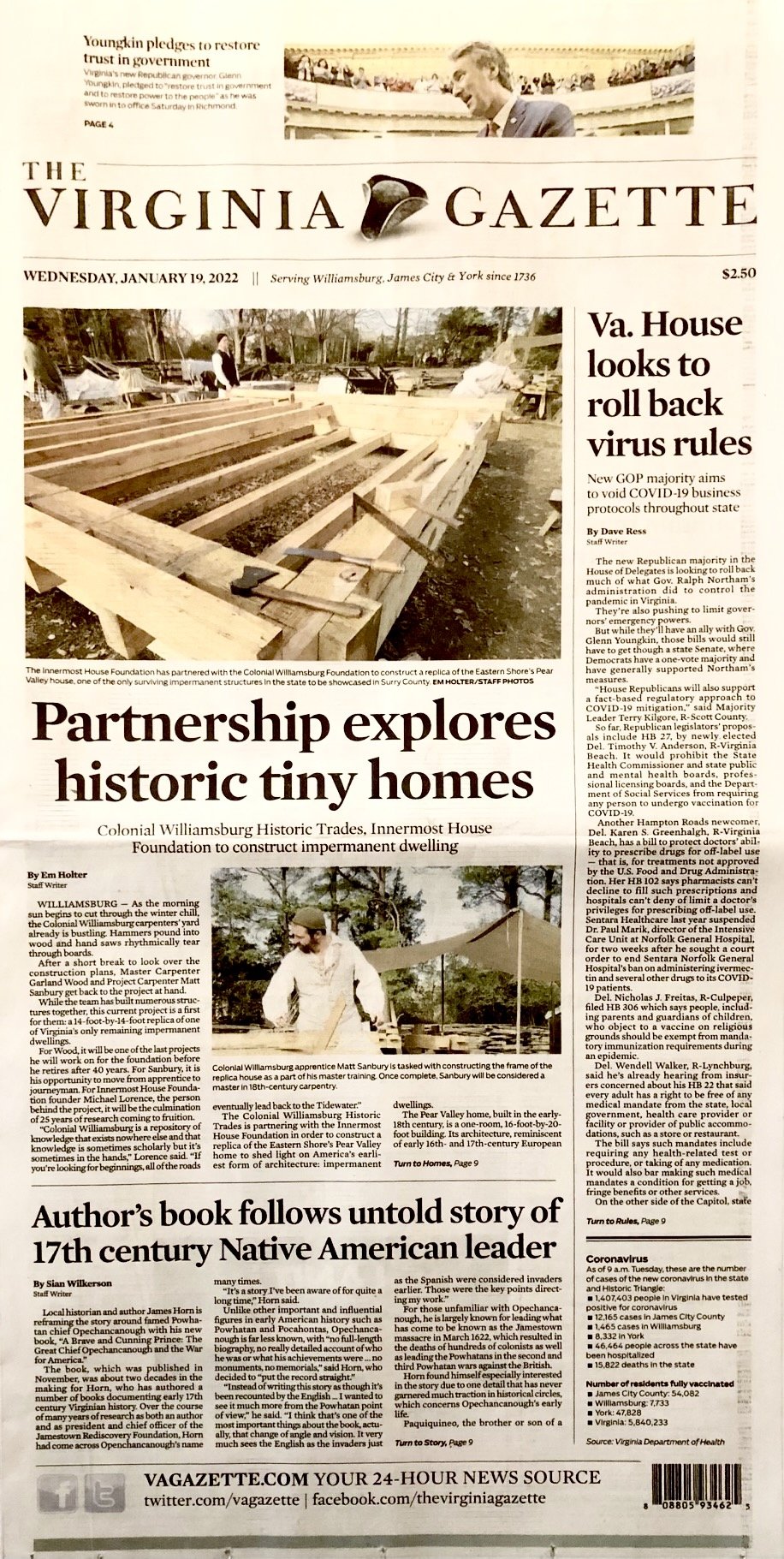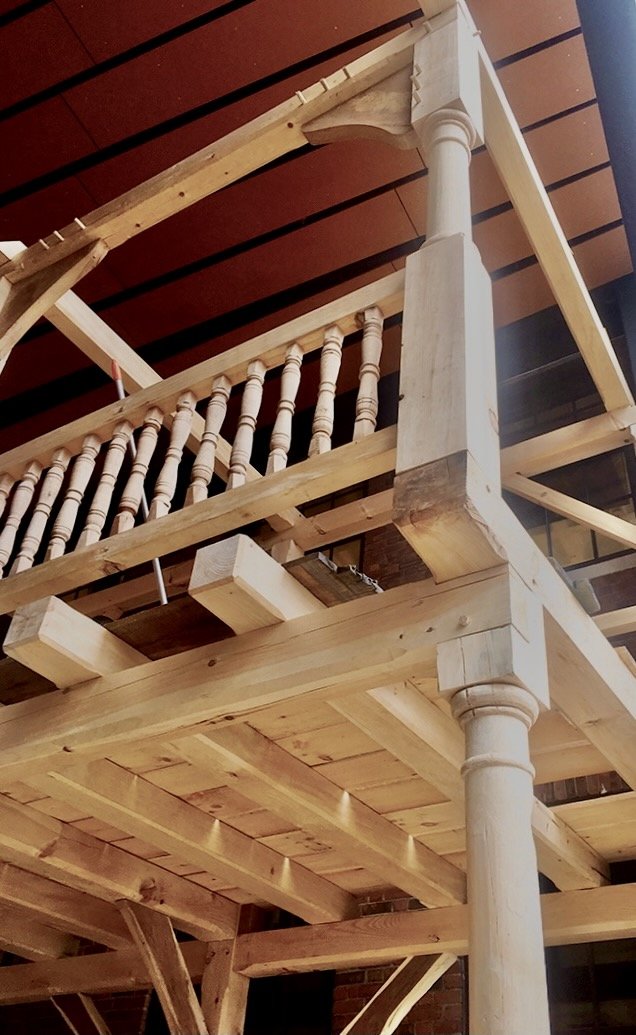It is difficult to begin without borrowing, but perhaps it is the most generous course thus to permit your fellow-men to have an interest in your enterprise.
Henry David Thoreau, Walden, “Economy”
Last week an article appeared on the front page of our local newspaper, The Virginia Gazette—“Serving Williamsburg, James City, and York Since 1736”—headlining the partnership between Innermost House and the Colonial Williamsburg Foundation over the building of our Virginia Frame. Though a little surprised at finding ourselves thus partnered with such a giant, however generous that giant may be, I quite enjoyed the article, and found myself reflecting yet again on the greatness of our good fortune.
I do not pretend even to myself that we could ever in any real sense be “partners” with a colossus like Colonial Williamsburg. Whatever kind of a thing Colonial Williamsburg is, it is the largest thing of that kind in the world. Whatever kind of thing we are, we are probably the smallest of that kind. At least, we strive to be.
To share even a few weeks of our project with Colonial Williamsburg is a gift to us beyond reckoning. I am told it is a unique circumstance. In almost half a century of building, the Historic Trades carpenters have apparently never before undertaken a project with an outside organization. It happened in our case that permitting delays on other Historic Area buildings opened a borrowed space of work where the carpenters could craft our frame and accomplish three things at once for the trade. They could:
Offer apprentice Matt Sanbury an opportunity to earn journeyman status by supervising the frame of a complete domestic structure.
Begin a project designed to coordinate with a special framing presentation by Garland Wood for the national Woodworking Conference held at Colonial Williamsburg last weekend.
Gain an unprecedented opportunity to replicate one of the most interesting and best preserved early buildings in Virginia.
We, of course, were the greatest gainers of all. Our original intention had been to build our frame with the North Bennet Street School in Boston, the oldest trade school college in the country and home to an excellent and thriving Preservation Carpentry program. They certainly would have built a beautiful frame.
North Bennet Street School and Colonial Williamsburg have long cooperated in a variety of ways. Many students from North Bennet go on to work in the trades at Colonial Williamsburg. And North Bennet Street School is a regular sponsor of Colonial Williamsburg’s annual Woodworking Conference, contributing support as well as expert presenters. The two are natural partners in preserving the historic trades.
The president emeritus of North Bennet, Miguel Gómez-Ibáñez, is an architect, fine-furniture maker, and founding member of our board. I remember when I first visited Miguel at the school. In the splendid new atrium connecting their two historic buildings, there stood a fully-framed and assembled Jacobean gallery for the Shakespeare Company of Worchester, recently completed by their students. It was so beautiful I just stood there gazing at it, much as I do now at our Virginia Frame in quiet moments at the Carpenter’s Yard.
But Garland Wood prevailed by urging the model of Pear Valley, an historical treasure in our near-midst and the earliest surviving example of the Virginia Frame house. Unlike most of the thousands of other examples of early Virginia “impermanent architecture,” Pear Valley survived because its builder took the extravagant step of placing it on a brick foundation. Thus was thirty years transformed into three hundred years, and we made its beneficiary.
The Gazette article discusses how what would become the Innermost House Foundation began twenty-five years ago with another extraordinary experience we enjoyed at the generosity of Colonial Williamsburg. Diana and I were given leave to live an experiment of two years in a 12 x 12-foot quarter just off the Duke of Gloucester Street. It was at that time that we first weaned ourselves away from domestic electricity, opening up our senses to an older way of seeing and hearing and thinking and feeling. The article calls our Virginia House Project “a journey and a homecoming.” It has been all of that for us: a very long journey, and a very welcome homecoming.
The Colonial Williamsburgs and North Bennet Street Schools of this world belong in partnership together, for the benefit of all. For the Innermost House Foundations of this world, it is difficult to begin without borrowing of others’ skills and materials and time. “But perhaps it is the most generous course thus to permit your fellow-men to have an interest in your enterprise.”
Yours always,
Michael
The Innermost House Foundation is an entirely volunteer organization
dedicated to renewing transcendental values for our age.
IMAGES
M. Lorence: Virginia Gazette, January 19, 2022
North Bennet Street School, Annual Report, 2017
M. Lorence: Carpenter’s Yard and Virginia Frame under snow, January 22, 2022
QUOTATIONS
”It is difficult to begin without borrowing. . .” Henry David Thoreau, Walden, “Economy”




